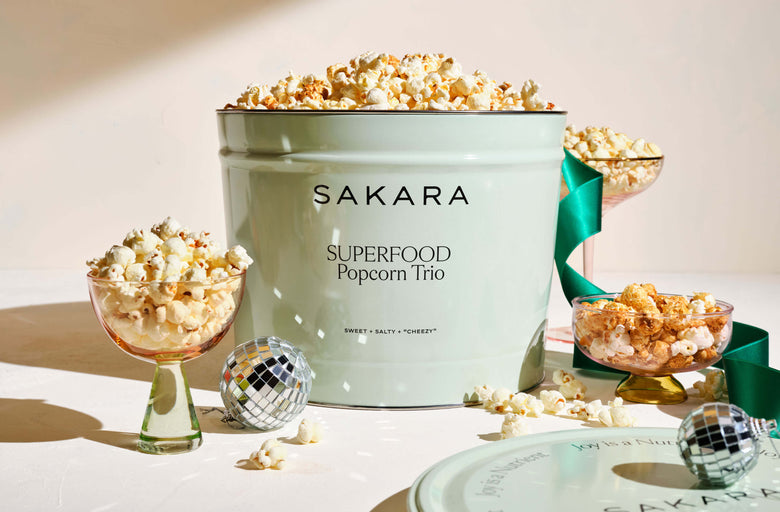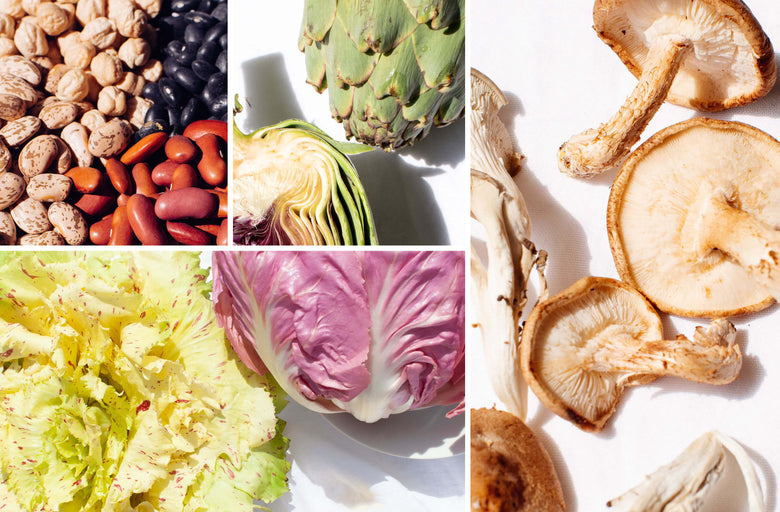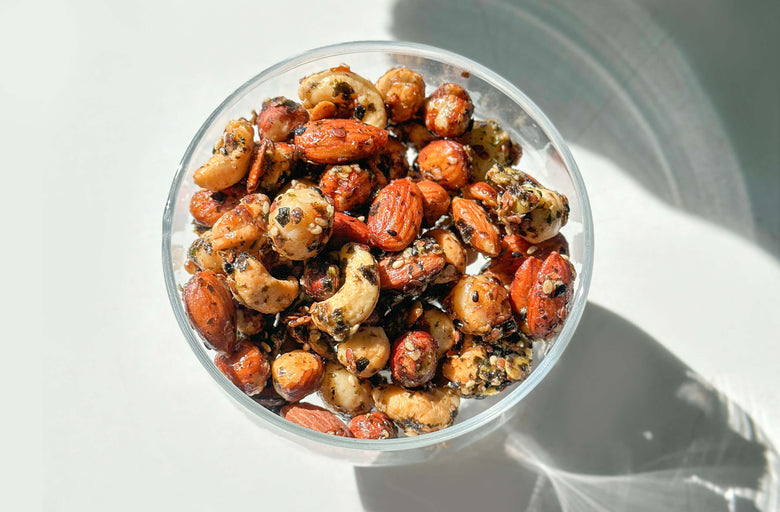Sakara Glossary is your go-to place to learn the foundation of optimal health and wellness — we give you the 411 on the minerals, vitamins, and concepts that are integral to a healthier, more conscious, whole life.
Nutritional Yeast
(nu̇-ˈtrish-nəl ˈyēst), noun.
Origin: Ancient Egypt
Nickname: Nooch, Hippie Dust
While the use of yeast dates all the way back to the Ancient Egyptians, nutritional yeast didn’t grace grocery stores aisles until the 1950s. Even then, it wasn’t until the rise of the high-health movement and plant-based diets in the late ‘60s and early ‘70s that the versatile seasoning found its way into the dishes, and hearts, of many. Flash forward to today and find the savory superfood staple—affectionately referred to as “nooch”—not only serving as a worthy substitute for cheese in recipes, but offering an energy and nutrient boost to plant-based beings and carnivores alike.
So... what exactly is nutritional yeast? Despite its clinical-sounding name, the seasoning is nothing to shy away from. Nutritional yeast is an inactive form of the yeast strain Saccharomyces Cerevisiae—the same kind used for baker’s and brewer’s yeast—and, while it can’t leaven sourdough or transform grape juice into a gluggable red, it stands its ground as an impressive contributor to both a meal’s nutrient density and flavor profile.

To get from the common Saccharomyces Cerevisiae to nutritional yeast, Saccharomyces Cerevisiae is fermented in large vats of carbohydrate-rich blends. Think: molasses, nutrients, and water. Here, pH and temperature are delicately monitored and maintained as the fermentation process works its magic. The mixture is then pasteurized, or heated, and dried to extract the maximum nutritional benefits. The result? Delicious, golden flakes that add an umami element to salads, thicken pasta sauces, and transform popcorn—a classic nooch gateway snack—into something even more “cheesy” and irresistible, sans the artificial-orange-digit aftermath.
Not All Nutritional Yeast Is Created Equal
Not all nutritional yeast yields the same degree of body-loving benefits, though. There are two varieties: fortified nutritional yeast and unfortified nutritional yeast. Unfortified nutritional yeast has no added vitamins or minerals, but still contains a moderate amount of B vitamins that form naturally as the yeast grows. In the U.S., you’ll most likely find its more nutritious counterpart, fortified nutritional yeast, on the shelves. Fortified means that vitamins, specifically Vitamin B12 which supports cellular energy production, were added during the manufacturing process to further boost its nutritional content.
The end result is a versatile supplement that nourishes the body with iron, beta-glucan fiber, minerals (like magnesium and zinc), protein, and a full spectrum of B vitamins (like thiamine, niacin, Vitamin B6, and Vitamin B12)—which promote energy and proper brain function, along with healthy hair, skin, and nails.
B12 = Energy
Since it gets plenty of buzz in the plant-based world, let’s talk about Vitamin B12 for a second. Vitamin B12 is essential for cellular energy production—helping the body convert the food you eat into energy—and needed for a healthy nervous system, DNA production, and the creation of red blood cells.
B12 is also an essential vitamin—one necessary for your body to function and thrive—that’s unable to be produced by the body alone and found in animal products like meat, fish, eggs, and milk. The American Journal of Clinical Nutrition suggests that plant-based eaters should regularly consume foods fortified with Vitamin B12 to combat the signs of a deficiency—like weakness, anemia, and memory loss. A deficiency can also present itself as perpetual fatigue, even despite eight hours in the sheets. And, when you factor in things like caffeine and alcohol, B vitamins (and your energy) are depleted even further. A supplement, like nutritional yeast, can help support your energy levels and keep your nervous system healthy.
Nutritional yeast releases free B12 in the body that combines with an intrinsic factor—a substance secreted by the stomach cells—and is then absorbed by the small intestine. Shortly after, B12 circulates throughout the body, employing some of its most essential functions, including working with the other B Complex vitamins to help transmute carbohydrates, fats, and protein into energy in the body.
Doesn’t Stop There
Nutritional yeast also contains beta-glucan fiber, a soluble dietary fiber found in the cell walls of yeast. You may recognize beta-glucan fiber from foods like oats and barley, but this one’s got a twist. Studies show that when it’s derived from yeast, it offers a whole array of different health benefits–notably, an improved immune response. Yeast-derived beta-glucan fiber also supports healthy blood sugar and cholesterol levels.
One more thing to add: Nutritional yeast is a high-quality, complete protein, providing the body with all nine of the amino acids that it’s unable to produce on its own. The amino acids then form proteins that help build and repair long, lean muscles.
Salt, Pepper, and Nutritional Yeast
Next time you set the stage for a dinner party, consider adding that nutritional yeast shaker right next to the other principal dancers. Or weave it right into the lineup with delicious snacks and sides like Spicy Green Protein Seed Crackers and Creamy, Crispy Stuffed Sweet Potatoes.
To add more B12 into your regimen, think about changing up your snacks during the day from something that solely satisfies a craving to a functional supplement that’ll nourish and energize your body on the cellular level.
DISCOVER FUNCTIONAL INGREDIENTS + BUST NUTRITIONAL MYTHS:






